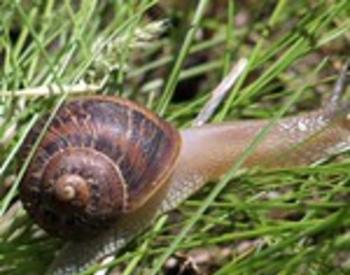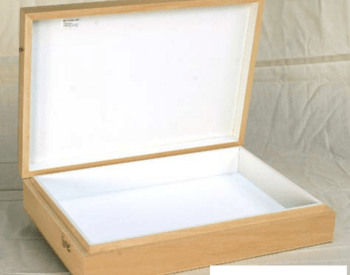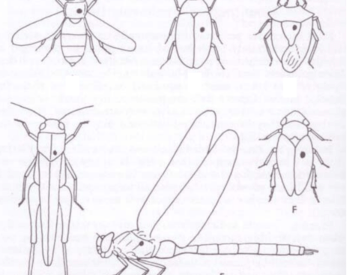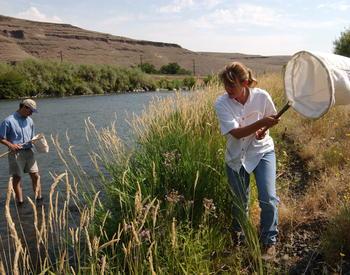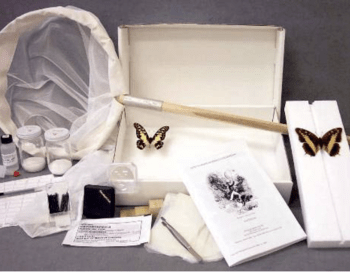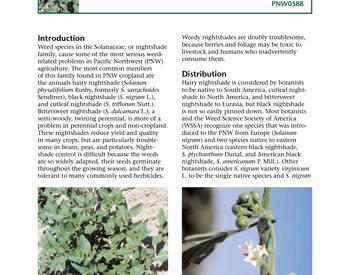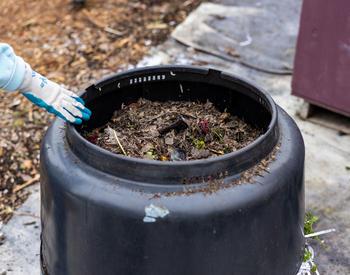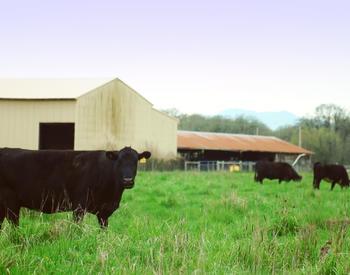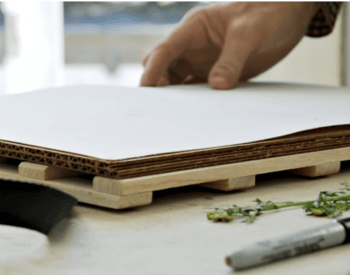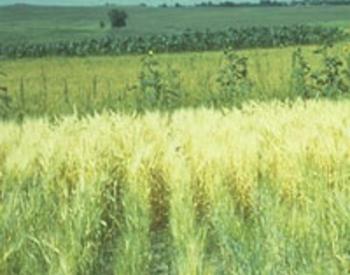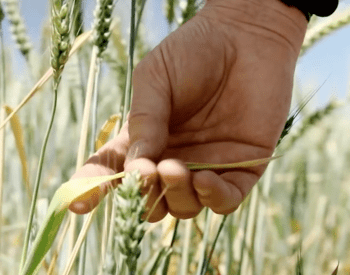"Integrated pest management (IPM) is an ecologically-based pest control strategy that relies heavily on natural mortality factors such as natural enemies and weather, and seeks out control tactics that disrupt these factors as little as possible. IPM uses pesticides, but only after systematic monitoring of pest populations and natural control factors indicates a need. Ideally, an integrated pest management program considers all available pest control actions, including no action, and evaluates the potential interaction among various control tactics, cultural practices, weather, other pests, and the crop to be protected."
The definition above, from Flint and Van den Bosh (1981, "Introduction to Integrated Pest Management," Plenum Press) has been widely accepted by the agricultural community for decades. In particular, it points to IPM’s ecological foundation and to the importance of monitoring and selection of multiple control practices. The IPM concept was developed from the realization that most pesticide applications affect both pests and beneficial organisms in the crop, sometimes to the disadvantage of the grower.
IPM: Theory and practice
About IPM
- An IPM program may target a single pest, a pest category (e.g., insects, weeds, diseases or rodents) or the whole pest complex. Traditional pest control usually considers each pest exclusively.
- It is critical that you understand the terminology involved and approach your particular pest problem with a solid knowledge of all the strategies and tactics available.
- It requires a thorough understanding of the biology of the crop (or resource) and of the pest complex.
- IPM takes into account the interactions among pests, beneficial organisms, the environment and the crop.
- IPM attempts to maintain pest populations below economically damaging levels by using a balance of biological, cultural, chemical, genetic or other control methods.
- Depending on the scope and complexity of the management system, IPM systems can be flexible and programs may vary with time of year, location and type of crop.
- IPM is about limiting factors in an ecosystem. A site can support only a certain number of pests because one or more of the key requirements — food, water and shelter — is limited. Reduce one and you reduce the pest numbers. All you have to do is figure out which one.
- The best insect control plans start with the simpler methods, then progress to include aspects from all types of control. For example, a control program for the cabbage maggot may begin with transplants. This approach allows older, more vigorous seedlings to escape infestation. Transplanting is followed by the destruction of plants immediately upon harvest of cole crops. Quick destruction after harvest prevents maggots from completing their life cycle.
Basic strategies
- Management vs. control vs. eradication. A "bug-free" garden is not a healthy garden.
- Prevention is easier and cheaper than treatments.
- Remove their food (energy).
- Remove their shelter (protection).
- Remove their breeding sites (reproduction).
- Exclude — prevent entry.
- Sometimes the best thing to do is nothing.
- Regardless of what method is used, unless it includes constant monitoring and observation, the pest problem will come back and bite you.
- Combined strategies are more effective in the long run than any one strategy used by itself.
IPM process
- Monitoring — You don't know you have a problem until you find it and identify it. Monitoring is conducted with the aim of verifying results for the management of a specific pest or pest complex.
- What are you trying to control? Do you have a specific ID? Is it a "pest"? An IPM program targets specific pests, which may include insects, mites, plant diseases, weeds or vertebrates. In the development of an IPM program, these pests are identified and monitoring and control programs are designed for each of these pests.
- Is it out there and is it causing the damage? Sampling should accurately assess the pest pressure and the abundance of beneficial organisms in the management unit. Monitoring is conducted so that management actions can take place in a timely and effective manner.
- What results are you looking for? Keeping fields entirely pest-free is neither necessary nor desirable. Most crops can tolerate low pest infestation levels without any yield loss. IPM seeks to reduce pest numbers below economically damaging levels rather than eliminate infestations. Pesticides should be applied only when economically justified by the number of pests present.
- Are control methods available and are they likely to work in this situation? Control tactics should be employed to make the crop less favorable for pest survival and reproduction while disturbing the rest of the ecosystem as little as possible. Combining different control tactics into an overall strategy balances the strengths of each against any individual weaknesses. Using different techniques also reduces the probability of the development of pest resistance. Control tactics should be compatible with beneficial organisms and the environment. Choose a strategy that is:
- Least disruptive of natural controls.
- Least hazardous to human health.
- Least toxic to nontarget organisms.
- Least damaging to the general environment.
- Most likely to produce a permanent reduction of the pest population.
- Easiest to carry out effectively.
- Most cost-effective over the short- and long-term.
Tools of IPM
Cultural control
Integrating cultural control components with other control measures minimizes the impact of pests on desirable plants yet provides acceptable control. Where you plant the plant can make all the difference in the world. Many cultural problems and solutions are directly related to level of plant care. For example, too much of one "nutrient" can cause growth problems and or make the plant more attractive to pests.
Bottom line: Healthy plants tend to be less attractive to pests and can better protect themselves from pests.
Cultural control methods include:
- Environmental modification through:
- Changing soil type/pH.
- Changing nutrient levels.
- Shade/sun exposure.
- Temperature and light (extremes and rapid fluctuations).
- Nearby buildings, structures, or other objects can reflex or shade plants.
- Drainage/moisture levels, oxygen (roots need to breathe).
- Wind protection.
- Companion crops: Are often used to repel insect pests or to attract them away from crops. Don’t rely on these methods without constant observation. If they do not work, be prepared to spray, plow, dig up, etc.
- Crop rotation: Can break plant/insect pest relationships. By varying the location of crops within a garden (when possible), or by not growing certain crop types for a number of years, certain insect pest populations can be drastically reduced. Organic soils provide attractive habitat for many soil insects. In addition, insecticides are more rapidly broken down in these soils.
- Trap crops: Can quickly become overrun with insects. For example, nasturtiums can attract cabbage aphids away from cole crops. If aphids are not controlled on the trap crop, they will eventually move to the crop you are trying to protect. Weed and volunteer crop control prevents them from becoming an alternative food for insects, particularly before crop emergence. Weed residues can also harbor insect pests. Clear away planks, cardboard boxes and overgrown areas; these provide excellent habitats for pests such as slugs, sowbugs and earwigs.
- Resistant crop varieties: Resistant crop varieties are sometimes available to the homeowner, although most resistance involves plant diseases and not insects.
- Planting dates: Using transplants or adjusting seeding dates to avoid emergence of the plant during peak insect populations may help reduce damage. Can produce well to excellent control of insect pests; a minimum of labor is required.
- Mulches: Mulch can act as a weed-control tool. One thing that mulches will do if put down in sufficient thickness is to prevent sunlight from reaching the soil. Mulch will also conserve moisture and modify the microclimate and soil temperature around the plant. Mulches can be natural or artificial in origin. Too much mulch can prevent critical pollinator bees from nesting at these sites. Natural mulches are composed of materials such as bark, grass clippings, leaves, compost, manure, sawdust, wood chips, straw, hay, crushed corn cob and pine needles.
Mechanical control
- Mechanical disking/weeding, tilling; can affect ground nesting bees.
- Water blasting vacuuming the pest.
- Freezing the infested item.
- Barriers: Screens, nets, caulking to seal holes.
- Trapping: Passive vs. active. Tangle foot generally nonselective. Selective baiting with food, sexual attractant.
Biological control
Biological control of insects
Biological control is the beneficial action of predators, parasites, pathogens and competitors in controlling pests and reducing their damage. Biocontrol provided by these living organisms (collectively called "natural enemies") is especially important for reducing the number of pest insects and mites.
Use of beneficial insects can be difficult to assess for the homeowner. Many insects are offered for sale (particularly ladybird beetles, lacewings, and praying mantids), but success with these introduced predators is rare and often inconsistent. These insects will have to be reintroduced each year in order to maintain a garden’s population after winter kill or migration. It is a good idea to be able to identify beneficial insect species in all their growth stages, so as to prevent their unintentional destruction.
No labor is involved after the initial release, the population can be self-perpetuating. You can establish biological control, as the predator will target only the pest. For example, Bacillis thuringiensis is useful for caterpillars. Only selected insect species will be controlled; control may often be cyclical or incomplete. Many insects and some weeds that were widespread pests are now partially or completely controlled by introduced natural enemies. These natural enemies can be disrupted, such as by pesticide applications.
Recognizing natural enemies
Proper identification of pests and distinguishing pests from their natural enemies are essential to effectively using biological control.
For example, some people may mistake aphid-eating syrphid fly larvae for caterpillars. The adult syrphid, commonly also called a flower fly or hover fly, is sometimes mistaken for a honey bee.
Consult publications such as the UC Statewide Integrated Pest Management Program Pest Notes series to learn more about the specific pests and their natural enemies in your gardens and landscapes. Take unfamiliar organisms to your Extension office for expert identification.
Carefully observe the creatures on your plants to help discern their activity. For example, to distinguish plant-feeding mites from predaceous mites, observe them on your plants with a good hand lens. Predaceous species appear more active than plant-feeding species. In comparison with pest mites, predaceous mites are often larger and do not occur in large groups.
Conservation: protect natural enemies
Preserve naturally occurring beneficial organisms whenever possible. Most pests are attacked by several different types and species of natural enemies, and their conservation is the primary way to successfully use biological control in gardens and landscapes. Ant control, habitat manipulation and selective pesticide use are key conservation strategies.
Chemical pesticides
The label is the law!
Broad-spectrum pesticides often kill a higher proportion of predators and parasites than of the pest species they are applied to control. In addition to immediately killing natural enemies that are present (contact toxicity), many pesticides are persistent materials that leave residues that kill natural enemies that migrate in after spraying (residual toxicity). Even if beneficials survive an application, low levels of pesticide residues can interfere with natural enemies' reproduction and their ability to locate and kill pests.
Biological control's importance often becomes apparent when broad-spectrum, persistent pesticides cause secondary pest outbreaks or pest resurgence. A secondary outbreak of a different species occurs when pesticides applied against a target pest kill natural enemies of other species, causing the formerly innocuous species to become pests. An example is the dramatic increase in spider mite populations that sometimes results after applying a carbamate (e.g., carbaryl or Sevin) or organophosphate (Malathion) to control caterpillars or other pests.
A less-persistent pesticide can result in longer control of the pest in situations where biological control is important because the softer pesticide will not keep killing natural enemies. One soft pesticide spray plus natural enemies can be effective for longer than the application of one hard spray.
Eliminate or reduce the use of broad-spectrum, persistent pesticides whenever possible. Carbamates, organophosphates and pyrethroids are especially toxic to natural enemies. When pesticides are used, apply them in a selective manner. Treat only heavily infested spots instead of entire plants. Choose insecticides that are more specific in the types of invertebrates they kill, such as Bacillus thuringiensis (Bt) that kills only caterpillars that eat treated foliage. Rely on insecticides with little or no persistence, including insecticidal soap, horticultural or narrow-range oil, and pyrethrins.
IPM for non-insect pests
Weeds
Weed biology, classification and identification
Identification of a weed should be the first step taken in a successful control program. Successful identification of weed species requires that a sample, with as much of the plant as possible, be intact. This includes flowers, stems, leaves, and roots. Careful examination of various plant structures should be used in the identification process to distinguish between “look-alikes.” A knowledge of where and how the weed was growing also will help in identifying which control measures can be used.
Weed control methods
Once the weed is identified and biology of the plant is understood, control measures can be considered. “Silver bullets” and “one-shot control programs” that will control weeds without harming nontarget plants are very rare or nonexistent. An integrated approach to weed control is the most efficient and environmentally safe approach. An integrated approach also uses a combination of cultural, mechanical, physical and chemical techniques to bring weed populations to an acceptable level. Six methods available to the homeowner include prevention, biological, cultural, mulches, mechanical and chemical.
Non-insects invertebrates and arthropods
- Nematodes or eelworms are tiny, unsegmented worms that may be as small as 1/125 inch in length.
- Slugs and snails: These are mollusks, not insects. Both have soft bodies and secrete a silvery mucus that appears as trails across the garden. Snails carry a shell about with them. They spend the winter in the soil as eggs. Young and adult slugs often rest in nightcrawler tunnels. They appear in early spring and multiply rapidly under moist conditions.
Vertebrate pests
- Rodents: Some gardeners worry about critters while others consider them part of nature’s plan. One gardener’s wildlife habitat or sanctuary is another gardener’s nightmare or problem. Over the years you spend tending a garden, you come to realize there are a few shortcuts to preventing animal and other pest problems. Some you need to control; others you learn to live with; and others you learn to share with other gardeners. In all cases, you need to consider personal pest management objectives, the environment (city or country) in which you are gardening, your neighbors, and how treatments will impact the individual plant as well as the environment. Proper identification, timing, persistence and diversification will play an important role in successful pest management plans. Hantavirus has become a concern for anyone handling vertebrate pests. Also of concern are several other animal-human transferred diseases and parasites including rabies, plague, Lyme disease and Rocky Mountain spotted fever.
- Birds: All birds, in one way or another, are beneficial to man. They can, however, create problems singly or in groups. Birds are important in preventing insect outbreaks and their control of other garden pests benefits most gardens. We often consider birds pests when they consume and destroy fruit and seed crops such as strawberries, sweet cherries, and sunflowers; contaminate foodstuffs or buildings with their feces; and transmit diseases directly or indirectly to man, poultry, or dairy animals.
- Cottontails and jackrabbits: Rabbits will girdle young trees, chew off bark and young twigs of woody plants in winter, and consume leafy plants during summer
- Bats: Bats are beneficial insect-eating animals. Occasionally bats get into buildings or attics where they foul the area with odorous feces or guano and disturb the occupants with their nocturnal activities. Bats can carry rabies.
- Raccoons: Raccoons have become adapted to urban and suburban areas, feeding at night at “garbage can” restaurants or from pet dishes. Normal fencing will not keep raccoons from your garden; however, electric fencing is particularly effective. Sprinkle black pepper on corn ears before they are ripe. Installing motion lights and leaving radios on in the garden at dusk and dawn may help repel raccoons.
- Deer: Deer can damage herbaceous and woody plants by browsing.
- Skunks: Skunks are kin to weasels and are not afraid of man. Skunks are protected by law in most states and frequently are found to carry rabies.
References
Developing and/or implementing an IPM program for a crop involves a systematic application of knowledge about the crop and the pests involved. The following references may be useful in acquiring and applying that knowledge:
- The 3 Pacific NW Management Handbooks: Insects, Plant Disease, & Weeds
- Oregon State University Integrated Plant Protection Center
- Washington State University Extension IPM
- University of Idaho Pest Management Center
- Integrated Pest Management Resource Guide (P.C. Jepson, L.J. Brewer and S.B. Jepson. 2006)
- US Environmental Protection Agency: Integrated Pest Management (IPM) Principles
- Natural Enemies Handbook: The Illustrated Guide to Biological Pest Control. 1998. M. L. Flint and S. H. Dreistadt. University of California Division of Agriculture and Natural Resources Publication 3386. Oakland.
- Pest Notes: Ants. Feb. 2007. M. K. Rust and J. H. Klotz. Oakland. University of California Agriculture and Natural Resources Publication 7411.
- Pest Notes: Red Imported Fire Ant. Sept. 2007. L. Greenberg, J. H. Klotz, and J. N. Kabashima. Oakland. University of California Agriculture and Natural Resources Publication 7487.
- Pest Notes: Spiders. In press. R. S. Vetter. Oakland. University of California Agriculture and Natural Resources Publication 7442.
- Pest Notes: Spider Mites. Dec. 2000. B. Ohlendorf and M. L. Flint, eds. Oakland. University of California Agriculture and Natural Resources Publication 7405.
- Pests of Landscape Trees and Shrubs. 2004. S. H. Dreistadt, M. L. Flint, and J. K. Clark. University of California Agriculture and Natural Resources Publication 3359. Oakland.

